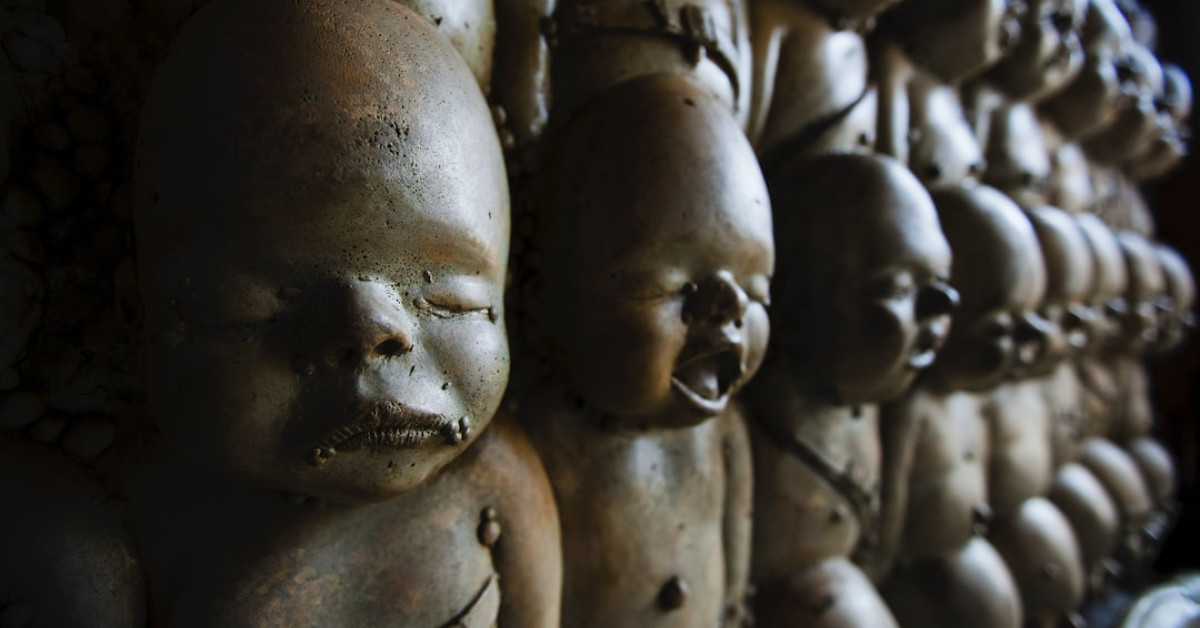When it comes to ensuring a smooth transfer of your assets upon your death, a Transfer on Death Deed (TODD) might seem like a straightforward solution. However, this seemingly simple legal document can present a myriad of hidden issues that can complicate your estate planning and catch your heirs off guard. In this comprehensive exploration, we will uncover the veiled problems associated with Transfer on Death Deeds, providing crucial insights for anyone considering this estate planning tool.
In the realm of estate planning, the need for a seamless transition of assets is paramount. With that in mind, understanding the potential pitfalls of Transfer on Death Deeds is essential for anyone looking to leave a lasting, uncomplicated legacy. The issues we’ll delve into range from unexpected tax implications to familial disputes, and from challenging legal constraints to surprising administrative burdens.
Armed with the insights from this in-depth article, you will be better equipped to decide whether a Transfer on Death Deed aligns with your financial goals and to prepare your heirs for what lies ahead. Let’s embark on this journey to demystify Transfer on Death Deeds and ensure you make informed decisions for your estate’s future.
The Landscape of Estate Planning: Transfer on Death Deeds Explained
Before delving into the problems with Transfer on Death Deeds, it’s crucial to have a clear understanding of what they are and how they operate within the spectrum of estate planning.
What is a Transfer on Death Deed?
A Transfer on Death Deed is a legal document that allows property owners to name beneficiaries who will inherit their real estate upon the owner’s death, without the property having to go through probate. This tool is designed to simplify the process of asset distribution, cutting down on time and legal fees that often accompany the traditional probate process.
Key Characteristics of TODDs:
- Avoidance of Probate: The property directly passes to the beneficiary, avoiding the probate court system.
- Retain Ownership Rights: The property owner maintains control over the property until death, with the ability to revoke or change beneficiaries.
- No Immediate Tax Implications: No tax implications for the owner while they are alive since the transfer occurs after death.
Assessing the Hidden Difficulties of TODDs
Now that we have a foundational understanding, let’s delve infood apps to download the hidden issues with Transfer on Death Deeds. Each of these complications can have a profound impact on the estate planning landscape for both property owners and their heirs.
1. Legal Limitations and Variations Between Jurisdictions
Transfer on Death Deeds are not universally recognized in all states, and each state that does recognize them may have different regulations governing their use. It’s imperative to familiarize yourself with your state’s specific laws to avoid unintended consequences.
Variations to Keep in Mind:
- State Recognition: Not every state has laws permitting TODDs.
- Legal Constraints: Some states place restrictions on what types of properties or the extent of the property that can be included in a TODD.
- Beneficiary Designations: Regulations around naming multiple beneficiaries and contingent beneficiaries can vary widely.
2. Impact on Estate Taxes and Eligibility for Benefits
While a how to make an extra ,000 per monthDD doesn’t incur taxes until the owner’s death, it could have an impact on the heirs’ tax liabilities and benefit eligibility. Depending on the estate’s value, this could lead to significant problems with Transfer on Death Deeds, as beneficiaries might be caught off guard by these financial implications.
Key Tax and Benefit Considerations:
- Inheritance Taxes: Some states impose inheritance taxes that can affect the beneficiaries financially.
- Capital Gains: Beneficiaries may face capital gains taxes based on the property’s increased value from the time it was originally purchased.
- Government Assistance Programs: Inheriting property through a TODD could affect a beneficiary’s eligibility for certain government programs like Medicaid.
3. Complications Arising from Joint Ownership and Multiple Beneficiaries
In cases of joint ownership or when naming multiple beneficiaries, Transfer on Death Deeds can result in confusing, complex situations for heirs.
Possible Multi-Beneficiary and Joint Owner Issues:
- Equal Shares: Conflicts may arise if beneficiaries do not agree on the property’s use, upkeep, or sale.
- Survivorship: With joint ownership, the last survivor may solely control the TODD, potentially circumventing prior agreements.
- Creditor Claims: Beneficiaries’ creditors could target their inheritances, affecting the other beneficiaries and the property itself.
4. Family Disputes and Contests
A significant problem with Transfer on Death Deeds stems from internal family disputes. Heirs might challenge a TODD if they feel slighted or if they suspect the deed was executed under duress or undue influence.
Potential for Family Conflict:
- Disinheritance: A TODD can unintentionally disinherit dependents who were expecting to receive a share of the property.
- Undue Influence: Allegations that the owner was influenced during the TODD’s creation can lead to legal battles.
- Ambiguities in the Deed: Vague language or unclear beneficiary designations can trigger disputes.
Comparative Analysis: TODD Versus Other Estate Planning Tools
To provide a clearer picture of how a Transfer on Death Deed stacks against other estate planning options, let’s consider a comparison chart.
| Estate Planning Tool | Pros | Cons | Considerations for Heirs |
|---|---|---|---|
| Transfer on Death Deed | - Avoids probate - Retains owner control - Simple to create |
- Potential for disputes - Can affect tax liabilities - Not recognized in all states |
- Might face unexpected responsibilities - Potential changes to financial standing - May require navigation of legal complexities |
| Living Trust | - Comprehensive control - Avoids probate - Flexibility in terms and conditions |
- More complex to set up - Requires active management - Potentially higher initial costs |
- Involvement in trust management - Understanding of trust terms - Benefiting from trust protections |
| Joint Tenancy | - Immediate transfer upon death - Simplicity in arrangement |
- Loss of control for the original owner - Potential for creditor issues - Can’t specify different heir percentages |
- Automatic inheritance - Must manage jointly - Possible disputes with other joint tenants |
| Will | - Clear instructions for asset distribution - Can include personal property and instructions |
- Subject to probate - Can be contested - Public disclosure of assets |
- Potential for a longer probate process - Exposure to legal challenges - Clear beneficiary designations |
Understanding the nuances of each estate planning tool and how they contrast with a Transfer on Death Deed is critical for property owners and heirs alike.
Preparing Your Heirs: Managing the Aftermath of a TODD
Problems with Transfer on Death Deeds don’t end with the legal document’s execution. Heirs must be adequately prepared to handle the property and any associated complications following the owner’s death.
Steps for Heir Preparedness:
- Understanding the Property: Thorough knowledge of the property, including its financial standing and any associated debts.
- Legal and Tax Implications: Familiarity with the legal and tax ramifications of inheriting property through a TODD.
- Conflict Resolution: Preparedness to tackle potential disputes and navigate negotiations or legal proceedings if necessary.
Potential Administrative Burdens for Heirs
While heirs might avoid probate with a Transfer on Death Deed, they could still face a multitude of administrative tasks.
Administrative Challenges Ahead:
- Property Maintenance: Responsibility for all property upkeep, including taxes, insurance, and repairs.
- Managing Co-Beneficiaries: Coordinating with other beneficiaries to make unanimous decisions regarding the property.
- Navigating Legal Frameworks: Understanding state laws and compliance with all necessary legal formalities to effectuate the transfer.
Final Considerations: Is a Transfer on Death Deed Right for You?
Given the complexities and problems with Transfer on Death Deeds, it’s essential to ponder whether this estate planning instrument is the right fit for your situation. A TODD can offer simplicity and ease for some but may open a Pandora’s box of issues for others.
Weighing the Pros and Cons:
-
Pros:
- Ease of Transfer: Enables a relatively straightforward transfer of property post-death.
- Cost-Effectiveness: Potentially less expensive than setting up a living trust or lengthy probate processes.
- Flexibility: Can be revoked or modified by the property owner at any time before death.
-
Cons:
- Lack of Contingencies: Limited options for outlining what should happen if a beneficiary predeceases the owner.
- Unforeseen Complications: Potential for disputes, tax liabilities, and administrative burdens for heirs.
- Inflexibility Post-Death: Once the owner passes away, terms cannot be changed, and beneficiaries must navigate the outcome as is.
In Summary: An Informed Approach to Transfer on Death Deeds
In conclusion, Transfer on Death Deeds can alleviate certain burdens in the estate planning process, but they can also yield unforeseen complications for your heirs. It’s essential to analyze the specific dynamics of your estate, your family’s situation, and the legal landscape in your state. From tax considerations to potential disputes, a TODD requires a nuanced understanding to ensure it serves its intended purpose effectively.
Remember that while this analysis provides a comprehensive overview of problems with Transfer on Death Deeds, consulting with an estate planning attorney is invaluable. By taking a well-informed, strategic approach, and preparing your heirs for the responsibilities and realities they will face, you can strive for a legacy that is as conflict-free and financially sound as possible.









